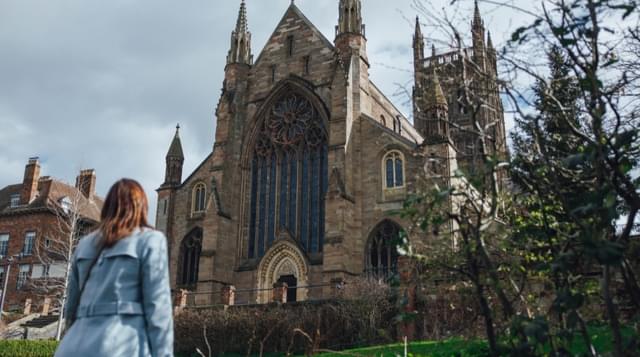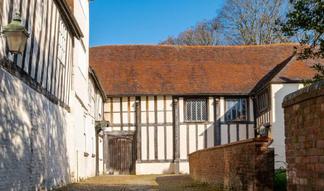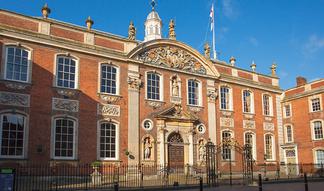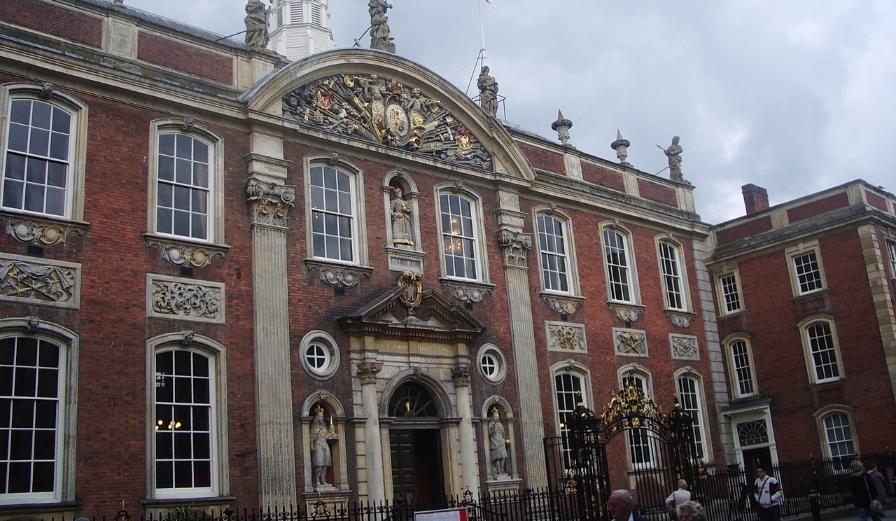
We spoke with Paul from Discover History to give us an insight into Worcester's royal links with both King Charles I and King Charles II
Both King Charles I and II came to Worcester during the turbulent English Civil Wars that took place between 1642 and 1651. Last September we remembered the 380th Anniversary of the Battle of Powick Bridge which essentially turned a period of scuffles and name calling into a full blown and bloody Civil War.
In 1644 the Royalists that had occupied Worcester for two years were struggling to upgrade crumbling defences and prevent soldiers from disappearing. When Sir William Russell tried to raise more men across the County, about 400 had deserted! This may have been because almost 300 had been pressed into service in recent months! These men were described as ‘Slovenly and inefficient.’
In the summer of 1644, the situation deteriorated further with King Charles I being almost caught by a clever Parliamentarian pincer movement. King Charles I entered Worcester for the first time on the 5th June 1644 and saw the terrible situation! One Parliamentarian Pamphlet described the City as ‘Poore in purse as barren in Knowledge.’
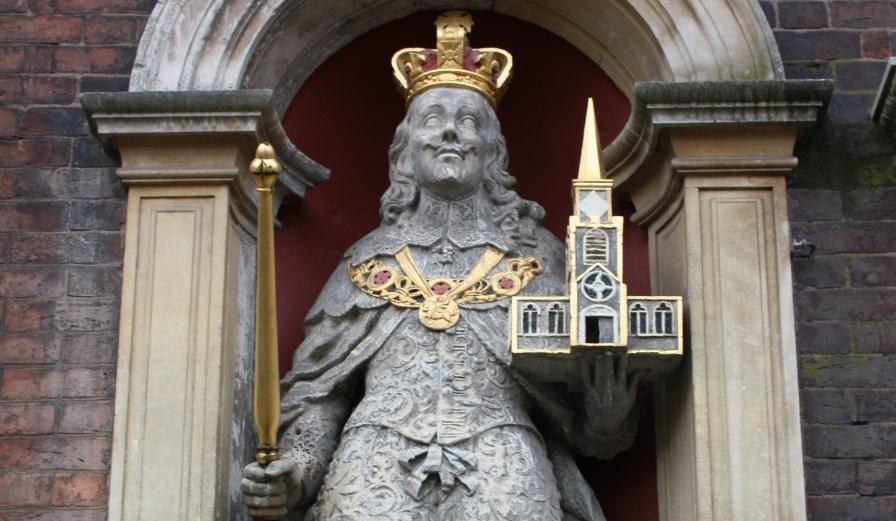
He was disappointed by the lack of recruits - ‘doth not consist of any great number, nor is it proportional to the greatness of the City’. Charles is believed to have stayed at Bishop’s Palace and held a Council of War, whereby he ordered Martin Sandys to press men and if they refused to arrest or expel them immediately.
King Charles ‘procured both shoes and stockings and money for his soldiers.’ An amount that would total more than £1,000.
Charles returned again on the 17th June 1645, after the disastrous Battle of Nasby. His aim was once again to drag more local men into his army and he ordered 3,000 Bushels of Wheat, 500 Pickaxes, spades and shovels, along with oats, beans and horses to be delivered to College Green, behind the Cathedral.
Unfortunately for Charles the events of that summer and the next few years would lead to the Royalist defeat, his surrender and eventual execution for Treason at the Banqueting House in London in 1649!
The statue of King Charles I stands in a painted red niche to the left of the door. He is shown wearing regal gowns, chains of office, a crown and carrying the Sceptre in the right hand and a church with a spire in the left. The Sceptre represents the authority of the Sovereign and is carved from wood and gilded. The Church is stone with gilded detail and whose door is permanently open. This shows Charles I as Head of the Church of England.
King Charles II arrived in Worcester on the 22nd August 1651, whilst marching to London from Scotland. He was seeking revenge for what he called - his fathers ‘murder’. Whilst resting his Army, Oliver Cromwell, who had shadowed this Scottish Invasion for three weeks, closed all escape routes for this Royalist army.
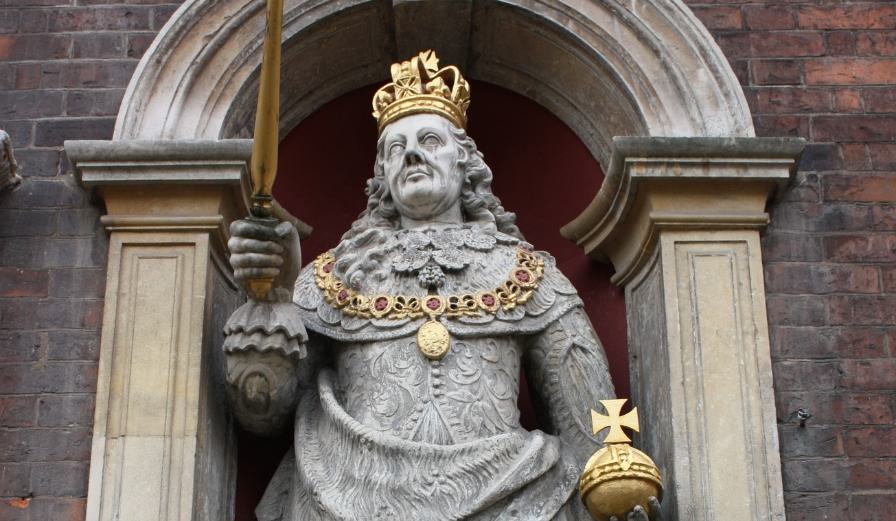
The Battle of Worcester was fought on the 3rd September and saw large numbers of local men fighting for the Parliamentarians to liberate the City of Scots! Charles II was very disappointed by the lack of local support to his cause!
His defeat, legendary escape and exile would be the last time King Charles II would visit the City of Worcester, despite being invited back!
The Statue of King Charles II stands in a similar niche to the right of the door and is wearing the gowns of a Monarch from the Restoration era of 1660; the time when Charles was invited to take the post of King, following the end of Cromwell’s Republic.
He is carrying the more common Orb and Sceptre. Once again the Sceptre is made of wood and both items are gilded.
Both statues were carved by local Stone Carver, Thomas White. Many believe he was not only the very talented Stone Carver, but the architect for the whole building in the 18th Century. The current building replaced the old and damaged Timber Framed Guildhall from the 13th Century.
Paul attended the poignant Proclamation ceremony on Sunday 11th September 2022 and remembered that Charles had visited the City several times as the Prince of Wales. When he returns to Worcester, one day, he will be King Charles III. It will be a photographer's dream to snap a picture of the three Kings called 'Charles' in front of the Guildhall.
We will always remember 'the late Sovereign of happy memory', Queen Elizabeth II and echo the words of many at the Coronation of King Charles III - ' God Save the King.'
